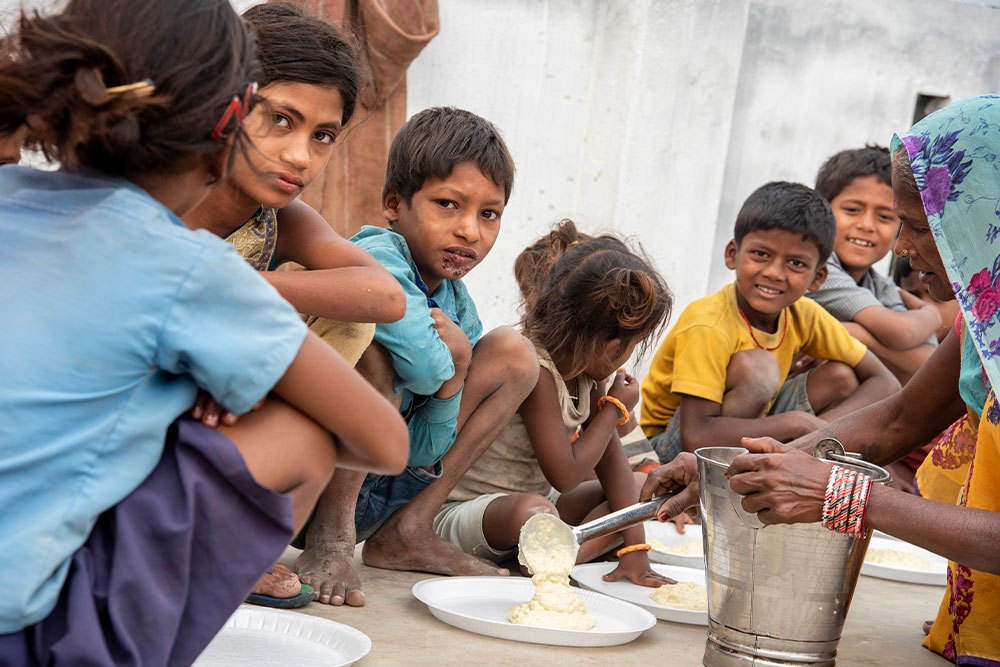There is growing evidence that socio-economic environments are changing how people in India access, prepare and consume food. Globalisation, urbanisation, changing livelihood patterns and inflation are increasing food access and choice for some, while constraining choice and access for others. Consumption of unhealthy diets is strongly patterned by socio-economic status. Two likely contributors to the socio-economic patterning in healthy diets are the cost of food and food literacy. Less nutritious, energy-dense foods are often inexpensive sources of calories, and quality produce has often been associated with higher cost.
Similarly, studies have demonstrated that education is one factor that appears to have a fundamental influence on food choice. Education, unlike gender, age or other demographic factors, is an achieved characteristic and not easily accessible to many, and hence is more responsive to policy interventions. Education paves the way to differential access to food and health information. It also enables people to rise up the social class hierarchy, allowing them greater power over changes and outcomes in their lives.
The economics of food choices

Factors driving food choice are not only based upon individual preferences, but are controlled by circumstances. Education level and income determine food choices and behaviours that can ultimately lead to diet-related diseases.
According to The State of Food Security and Nutrition in the World, 2020 report (an annual flagship report jointly prepared by FAO, IFAD, UNICEF, WFP and WHO), 14 per cent of India's population is undernourished. The report states that 189.2 million people are undernourished in India, and 34.7 per cent of the children aged under five in India are stunted. Despite decades of investment to tackle this problem, India’s child malnutrition rates are still one of the most alarming in the world. The Global Hunger Index (2020)—which is calculated on the basis of total undernourishment of the population, child stunting, wasting and child mortality—places India at the 94th spot among 107 countries.
The crisis of child malnutrition in India has often been attributed to historical antecedents such as poverty, inequality and food shortage. At the other end, as incomes have grown, parts of the population, have experienced a nutrition transition towards increasing consumption of processed, packaged and sugary foods. This is reflected in the rising dominance of obesity amongst Indian populations – in some urban areas up to 50 per cent of the population is obese – while the number of Indians suffering from Type 2 diabetes has reached epidemic proportions. Around 51 per cent of women aged 15-49 in India suffer from anaemia, while 45 per cent of children aged 6-59 months are vitamin A deficient. 70 – 80 per cent Indians including 88 per cent of the total urban population are Vitamin D deficient
The struggle
Low-income groups have less access to education, a greater tendency to consume unbalanced diets, and have low intakes of fruit and vegetables. Gaining access to healthy and affordable food can be a challenge for rural residents. Many areas lack food sellers and are considered ‘food deserts’ – areas with inadequate supply of fresh, affordable foods. Ironically, majority of these areas are farmlands which are important to the local economy.
Unfortunately, we live in a society where majority population don’t have the option of eating less or healthy, and instead, they worry about eating at all. Dipali, who works as a house help in Mumbai, says back home in Odisha, her family barely survives on the limited ration they manage to collect. “My sibling and I have all left our village and are working in cities so that our kids and parents back home can eat. We hear about the government schemes, but never manage to access it as none of us know where or who to reach out to. Our small village doesn’t have a school or even proper sanitation facilities. My kids live with their aunt so that they can go to school. I have not seen them in 3 years.”
Living on a low income can also present logistical obstacles to eating well, such as lack of transportation. She further added that occasionally when they have the means to travel the nearest ration store and get food, the quality of food is often bad and stale.
The schemes

India’s Public Distribution System (PDS) is a significant policy driver of food socio-economic environment interactions in India through its influence on food production, food availability and consumption patterns. The potential expansion of PDS coverage under the National Food Security Act is a welcome development and will likely have positive impacts on poverty reduction.
However, it has been under constant scrutiny and faces criticism for design and implementation flaws. The PDS is criticised as inefficient because of significant leakages and diversion of food stocks, and as ineffective in actually targeting poor consumers. The food system in India requires a systemic revamp of the public administration and service delivery systems, as well as engagement from the community. There is also a need to tackle gaps and inadequacies in the existing setup through public awareness, civic engagement and empowerment to assist the community in realising their rights.